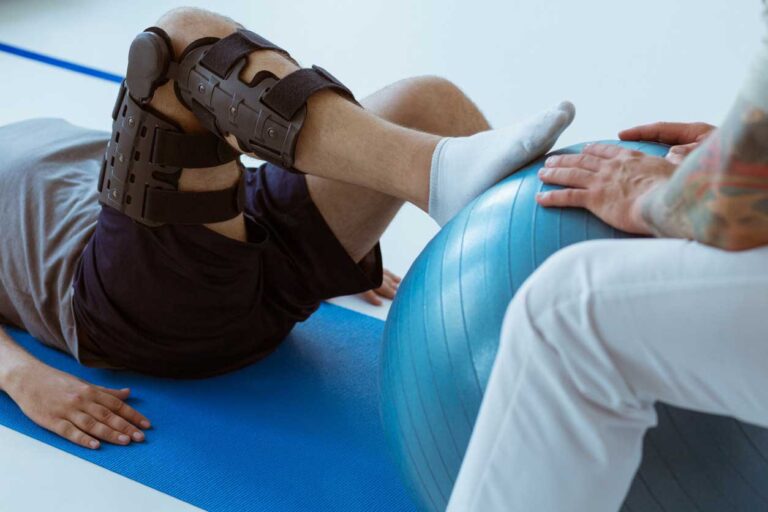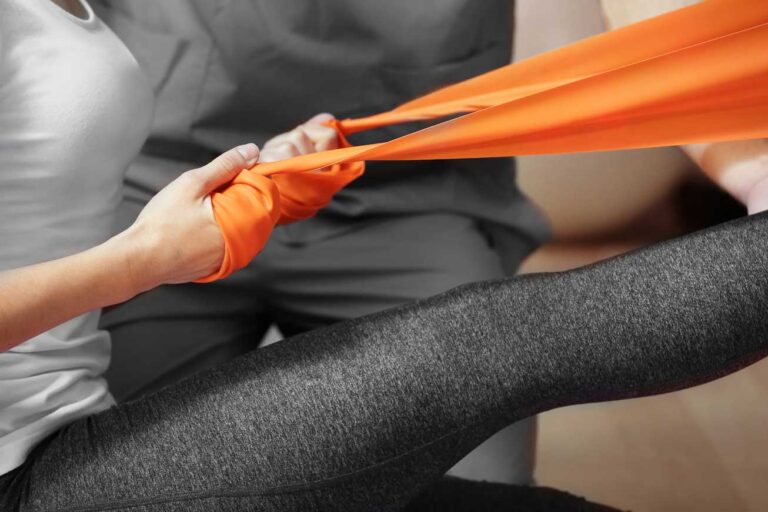An auto injury can have a significant impact on your physical health and well-being. However, staying active and exercising safely can help you recover faster and improve your overall health. After an auto injury, it’s essential to take steps to protect your body and prevent further injury while staying active. Here are some tips on how to stay active and exercise safely after an auto injury.

1. Consult with Your Doctor or Physical Therapist
Before starting any exercise program, it’s crucial to consult with your doctor or physical therapist. They can evaluate your injury and recommend appropriate exercises and activities based on your recovery progress. Your healthcare provider can also advise you on how much exercise you should be doing and any specific precautions or limitations you need to take.
2. Start Slowly
If you’ve been inactive due to your injury, it’s important to start slowly and gradually increase your activity level. Begin with low-impact activities such as walking, gentle stretching, or swimming. Starting with light activities helps you build endurance, strength, and flexibility without overexerting yourself.
3. Focus on Stretching and Flexibility Exercises
Stretching and flexibility exercises can help prevent stiffness and increase your range of motion. Focus on stretching exercises that target the affected area, as well as the surrounding muscles. Gentle yoga or Pilates can also help improve flexibility and core strength.
4. Avoid High-Intensity Activities
After an auto injury, it’s crucial to avoid high-intensity activities such as running or jumping. These activities can put too much strain on your body and increase the risk of re-injury. Instead, choose low-impact activities such as walking, cycling, or swimming. These activities provide cardiovascular benefits without placing too much stress on your body.
5. Use Proper Equipment and Techniques
Using proper equipment and techniques is essential when exercising after an auto injury. Wear supportive shoes with good cushioning and traction to prevent slips and falls. If you’re using weights, start with light weights and gradually increase as you build strength. When performing any exercise, make sure to use proper form and technique to prevent further injury.
6. Take Rest Days
Rest is essential for your body to recover after an injury. Take rest days and listen to your body. If you feel pain or discomfort, take a break from exercising and consult with your doctor or physical therapist. Overdoing it can lead to fatigue, burnout, and even more serious injuries.
7. Stay Hydrated
Staying hydrated is essential when exercising after an auto injury. Drink plenty of water before, during, and after exercise to prevent dehydration. Dehydration can cause fatigue, dizziness, and even fainting, which can increase your risk of falls and further injury.
8. Incorporate Low-Impact Strength Training
Strength training can help rebuild muscle mass and improve bone density after an injury. However, it’s crucial to start with low-impact exercises such as resistance bands or light weights. Focus on exercises that target the affected area and gradually increase the intensity as you build strength.
9. Consider Physical Therapy
Physical therapy can be beneficial for individuals recovering from an auto injury. A physical therapist can create a customized exercise program tailored to your specific needs and limitations. Physical therapy can help improve strength, flexibility, and range of motion while also reducing pain and improving your overall quality of life.
10. Stay Motivated
Staying motivated can be challenging when recovering from an injury. However, it’s essential to stay positive and focused on your goals. Find an exercise partner or join a support group to help you stay motivated and on track. Celebrate your progress, no matter how small, and remember that every step counts towards your recovery.

In conclusion, staying active and exercising safely after an auto injury is crucial for your physical and mental health. By following these tips, you can protect your body and prevent further injury while gradually increasing your activity level. Remember to consult with your doctor or physical therapist before starting any exercise program, start slow, focus on stretching and flexibility exercises, avoid high-intensity activities, use proper equipment and techniques, take rest days, stay hydrated, incorporate low-impact strength training, consider physical therapy, and stay motivated. With patience, dedication, and proper guidance, you can safely and effectively recover from your auto injury and improve your overall health and well-being.
This article provides tips for safe exercise after an auto injury. It emphasizes the importance of starting slow, consulting with a doctor or physical therapist, avoiding high-impact activities, using proper equipment, and staying hydrated. Call Specialty Care Clinics at (469) 545-9983 to book an appointment.
